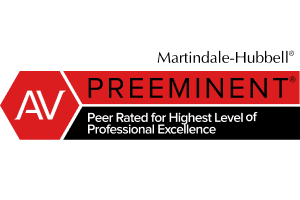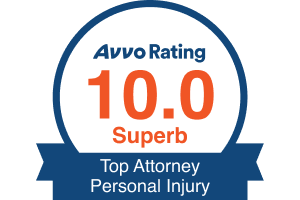Insurance: Locating and Identifying and Accessing Available Coverage
In all cases involving a pedestrian accident it is essential for an attorney to thoroughly evaluate all potential insurance coverage which may be available to their client. In doing so, the first step is to evaluate and identify all causes for the collision. Only after all causes have been identified, can an attorney then properly evaluate all possible insurance coverages available to tortfeasor and pedestrian. Many states permit pre-litigation identification of insurance coverage information based upon notice to the potential liable party. O.C.G.A § 33-3-28 (Georgia statute permitting pre-litigation identification of insurance coverage of at-fault party). It is important that an attorney familiarize themselves with the statutes which allow them to require a potentially liable individual to identify applicable insurance coverage. In this manner, an attorney may be able to resolve a claim without the need for litigation.
A. Liability Insurance Coverage
There are a variety of potential sources of liability insurance coverage for a driver who is responsible for a pedestrian accident. In the vast majority of states, insurance follows the car and, therefore, any insurance applicable to the vehicle being operated by the at-fault driver would generally provide the driver with coverage even if the vehicle is not owned by the driver. Omnibus clause as extending automobile liability coverage to third person using car with consent of permittee of named insured, 21 A.L.R. 4d 1146 (originally published in 1983). An attorney handling cases of this nature should immediately identify the insurance applicable to the vehicle itself.
If the driver was operating a vehicle which he or she did not own, then another potential source of liability insurance coverage is the driver’s own automobile insurance on the vehicles he or she does own. Generally, this liability insurance coverage will be secondary to the insurance applicable to the vehicle. 7A Am. Jur. 2d Automobile Insurance Sect. 562 (2015). Since pedestrian accidents often involve serious injuries, it is important to identify all layers of liability insurance coverage that may apply to the collision. In addition to the driver’s insurance on his own vehicles, he or she may also be entitled insurance coverage under and omnibus insurance clause on vehicles kept at the household where he or she lives by resident relatives. Generally, such omnibus insurance clauses provide that not only is the owner of the vehicle a covered insured under the liability insurance coverage, but resident relatives are also insured. Ga. Automobile Insurance Law Section 12:5, relatives who are residents of same household (2015-2016 Ed.) This provides a potential third layer of insurance coverage available to the at-fault driver.
It is extremely important to evaluate whether or not the at-fault driver was engaged in his or her employment or on an errand for another individual. In these circumstances, the employer’s commercial general liability insurance policy may be applicable to the collision. Cal. Comm. Int. Dev. L. & Prac. Section 20:2, checklist for insurance coverage (2015 Ed.). Likewise, if the individual was performing a task for another individual, even though not formally employed by that person, the individual for whom he or she was performing the task may be also liable under the doctrine of respondeat superior. 8 Am.Jur. Trials 1, Motor Vehicle Collisions – Agency Relationship (originally published in 1965). In these circumstances, that individual’s homeowner’s insurance coverage, while generally excluding claims arising out of an automobile collision, may provide a basis for insurance coverage to the person who is deemed the principal of the driver of the vehicle. 2 Practical Tools for Handling Insurance Cases, Automobile Exclusions, Homeowner’s Coverage, Sect. 12:7. Accordingly, an attorney should explore at the earliest time in the case possible whether or not the driver was engaged in their employment or a task for another individual.
A good practice pointer for identifying additional insurance coverage prior to the commencement of litigation is to require the at-fault driver to complete an affidavit regarding their employment status prior to the acceptance of any settlement. Very often, pedestrian collisions involve injuries that are valued at an amount in excess of the available automobile insurance coverage and, therefore, both the driver and insurance company are motivated to resolve the case. The desire of the defendant driver and the insurance company to resolve the case provides the attorney representing the pedestrian a great deal of leverage with respect to requiring disclosure of the driver’s employment status and other information which may lead to the discovery of additional insurance coverage.
In addition to the variety of sources of automobile insurance coverage, the potential availability of commercial general liability coverage and homeowner’s coverage, an attorney should also explore whether or not the driver of the vehicle has an umbrella or excess insurance policy which would cover claims arising out of the pedestrian accident. 15 Couch on Ins., Nature of Excess and Umbrella Policies, Sect 220:32. Again, an attorney should use as leverage the driver’s and insurance company’s desire to resolve the case to explore any and all additional areas of insurance coverage, including the presence of an umbrella liability insurance coverage. Should the defendant driver refuse to execute an affidavit or verify what other insurance he or she may have available prior to litigation, the attorney may have no choice except to file a lawsuit and explore the available insurance coverage through appropriate discovery. Generally, this will not be necessary due to the existence of the various disclosure statutes in a number of states as well as the desire of the driver to avoid litigation. It should be emphasized that disclosure of such insurance coverage information should be made under oath by the at-fault driver to ensure its reliability.
B. Medical Payments Coverage
Although a pedestrian is not occupying an automobile at the time of the collision, if he or she has medical payments coverage through their own automobile insurance policy, these policies may also provide medical payments arising out of a collision between the automobile and the policyholder while he or she is a pedestrian. 7A Am. Jur.2d, Automobile Insurance, Injury to the Named Insured or Relative as Pedestrian or While Occupying Vehicle of Unspecified Ownership, Sect. 463. Accordingly, it is helpful to acquire a copy of your client’s automobile insurance policy and explore whether or not he or she has medical payments coverage and, if so, whether or not it provides coverage while the insured is a pedestrian. Very often medical payments insurance policies have time limits for the assertion of claims under the policies as well as strict notice provisions. 28 No. 14 Ins. Litig. Rep. 501, Medical Payments Coverage: A Policy Inside a Policy. Accordingly, it is important that an attorney timely notify his client’s automobile insurance company of the claim.
C. Uninsured Motorist Coverage
Another potential source of insurance coverage for pedestrian collisions is uninsured motorist coverage. Uninsured motorist coverage is insurance that protects an injured person in the event the at-fault driver is without insurance or without sufficient insurance to cover the value of the claim. A pedestrian who has been injured in the accident and who has their own automobile, may be able to recover their damages under their automobile insurance policy’s uninsured motorist coverage. 81 Am. Jur. Trials, Uninsured and Underinsured Motorist Claims, Sect. 425 (originally published in 2001). Accordingly, it is extremely important that an attorney immediately acquire a copy of his client’s insurance declaration page and evaluate it to determine if uninsured motorist coverage is available. Similar to medical payments coverage, there are very strict time limited notification requirements for uninsured motorist coverage. Failure to notify your client’s automobile insurance company of a pedestrian accident in a timely manner, can and often will result in the entire loss of uninsured motorist coverage for the incident. Ga. Automobile Insurance Law, Notice of Requirements, Uninsured Motorist Coverage, Sect. 35:2 (2015-2016 ed.); Tambone v. Indiana Insurance Company, 229 Ga.App. 198 493 S.E.2d 578 (1997) (pedestrian seeking to recover uninsured motorist benefits unable to do so due to failure to timely notify his automobile insurance company of claim).
It is important to note, that an attorney should familiarize themselves with the uninsured motorist insurance statute in their own state to verify whether or not it is mandatory for the coverage to extend to pedestrians. Also, an attorney will occasionally find an uninsured motorist policy which provides coverage which is more extensive than the coverage which is mandated by statute. In these circumstances, the courts generally interpret the applicable uninsured motorist coverage to provide more expansive coverage than required in the uninsured motorist statutes. Parsons v. State Farm Mutual Automobile Insurance Company, 319 Ga.App. 616, 737 S.E.2d 718 (2013) (Insurer held liable for uninsured motorist claim when insurance policy provided broader coverage than statutorily required).







